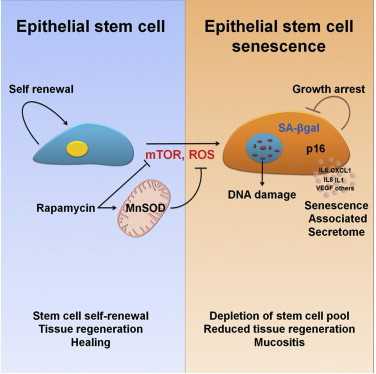Circulation:放疗增加癌症患者心脏手术死亡率
2013-04-12 MedSci MedSci原创
2013年4月8日—据《美国心脏学会》(American Heart Association)杂志发表的一项研究显示,与未接受放疗的肿瘤患者相比,接受胸部放疗的患者,在接受心脏大型手术后数年内死亡率增加近两倍。胸部放疗能杀灭或缩小乳腺肿瘤、霍奇金淋巴瘤和其他肿瘤;肿瘤患者接受放疗后,在接受大型心脏手术后数年甚至几十年后的死亡率增加。俄亥俄州的克利夫兰诊所医学副教授,研究创始人Milind Desa
2013年4月8日—据《美国心脏学会》(American Heart Association)杂志发表的一项研究显示,与未接受放疗的肿瘤患者相比,接受胸部放疗的患者,在接受心脏大型手术后数年内死亡率增加近两倍。胸部放疗能杀灭或缩小乳腺肿瘤、霍奇金淋巴瘤和其他肿瘤;肿瘤患者接受放疗后,在接受大型心脏手术后数年甚至几十年后的死亡率增加。
俄亥俄州的克利夫兰诊所医学副教授,研究创始人Milind Desai博士说道:早在20世纪60年代末、70年代和80年代,放射治疗在改善儿童和成年肿瘤患者生存方面发挥重要作用;但该疗法往往对心脏有负面影响。与未接受放疗的患者相比,放疗患者发展为进行性冠状动脉疾病、恶性心瓣膜病、心包疾病的风险更大;这些病变均能影响心脏周围结构,且往往需要大型心脏手术。
此项研究是评估前期放疗对大型心脏手术长期影响的最大规模试验。研究人员对需要心脏手术的173例放疗的肿瘤患者开展回顾性研究,这些患者放疗和心脏手术平均间隔时间为18年。研究人员对这些心脏手术患者平均随访7.6年,并与未接受放疗但接受类似心脏手术的305例患者进行对比。
Desai称:这些手术多为心内直视手术,包括瓣膜或旁路手术,其中大部分为多项同步手术;例如多瓣膜手术或瓣膜加旁路手术。约1/4患者需要重做手术,这将增加已接受初次手术患者的死亡风险。
放疗患者的术前评分与非放疗患者相似。通常情况下,术前评分有助于预测患者术后病情进展。无论患者术前是否接受放疗,患者在术后30天内的预后情况相似。但是,在随访的7.6年间,接受放疗的肿瘤患者死亡率高达55%,而未放疗患者死亡率仅为28%。
Desai表示:该结果证实,尽管术前风险评分较低,但放疗可增加大型心脏手术死亡率。医生需为有胸部放疗史的患者制定更适宜的治疗方案,以确定心脏手术对患者有益;某些患者可能更适宜经皮穿刺手术。
与放疗相关的拓展阅读:
- NEJM: 乳腺癌放疗增加缺血性心脏病风险
- 卡培他滨化放疗用于局部胰腺癌疗效佳
- NEJM:前列腺癌手术后15年功能结局与放疗相似
- Cancer Res:鼻咽癌放疗后复发及治疗耐受的重要原因
- Neural Regen Res.:脊柱图像引导放疗有助于保护脊髓神经元
- Radiother Oncol:食道肿瘤患者应尽早放疗 更多信息请点击:有关放疗更多资讯

原文阅读:Cancer Radiation Makes Heart Repairs Risky
The prognosis after heart surgery may be worse for cancer survivors with cardiac damage from radiation treatments, an observational study suggested.
Despite similar presurgical risk scores, 55% of patients died in the 8 years following surgery to correct radiation-associated heart disease compared with 28% mortality among other heart surgery patients (P<0.001), Milind Desai, MD, of the Cleveland Clinic Heart and Vascular Institute, and colleagues found.
Heart disease caused by radiation predicted 2.5-fold elevated mortality risk, the group reported online in Circulation: Journal of the American Heart Association.
"Our findings suggest that surgical intervention should be applied cautiously to patients who have had significant thoracic radiation previously," they wrote, "as the realized survival do not necessarily match what would be expected in a nonradiated population."
These patients may need alternative treatment strategies, Desai and colleagues suggested.
For example, "a percutaneous transaortic approach may circumvent specific technical difficulties such as extensive calcification of the ascending aorta that may occur with radiation disease and reduces the likelihood of lung or pleural damage from surgery," they noted.
Prior studies have suggested up to 42% of patients who get thoracic radiation develop significant valvular disease and 14% develop stress-induced myocardial ischemia. Other long-term effects of radiation can include pericardial disease and conduction disease as well as problems with the lungs and the great vessels and carotid arteries.
Desai's retrospective study analyzed outcomes of 173 consecutive patients at a single tertiary care referral center from 2000 through 2003 who had cardiothoracic surgery for coronary or vascular disease after radiation treatment for cancer (mean 18 years post radiation).
Most of these patients were breast cancer survivors (53%), while another 27% had Hodgkin's lymphoma.
As a comparison group, another 305 patients were included who had major cardiovascular surgery without a history of cancer or chest irradiation were matched for age, gender, type and time of the surgery.
The two groups had similar surgical risk Euro scores, with a mean of 7.8 in the radiation group and 7.4 in the controls (P=0.1). Combination surgical procedures were equally common in both groups.
But significantly higher mortality in the radiation group was seen across all patient subgroups and in every surgical category.
Even in the radiation groups expected to have low risk from heart surgery, morality was high: 43% among those under age 65 and 45% of those with low Euro scores.
Surgical complications didn't differ between the groups overall, but there were some differences in recovery.
The radiation group had longer hospital stays and more frequent postoperative atrial fibrillation, permanent pacemaker implantation, ventricular dysfunction, and valvular regurgitation. The 30-day mortality was also elevated compared with no-radiation controls.
Notably, recurrent malignancy accounted for only 5% of the deaths in the cancer survivor group for which a cause was ascertained. Cardiorespiratory causes of death were much more common (49%).
Limitations of the study included possible tertiary care referral bias and lack of data on advanced diastolic function imaging and precise radiation and chemotherapy characteristics.
本网站所有内容来源注明为“梅斯医学”或“MedSci原创”的文字、图片和音视频资料,版权均属于梅斯医学所有。非经授权,任何媒体、网站或个人不得转载,授权转载时须注明来源为“梅斯医学”。其它来源的文章系转载文章,或“梅斯号”自媒体发布的文章,仅系出于传递更多信息之目的,本站仅负责审核内容合规,其内容不代表本站立场,本站不负责内容的准确性和版权。如果存在侵权、或不希望被转载的媒体或个人可与我们联系,我们将立即进行删除处理。
在此留言










#癌症患者#
25